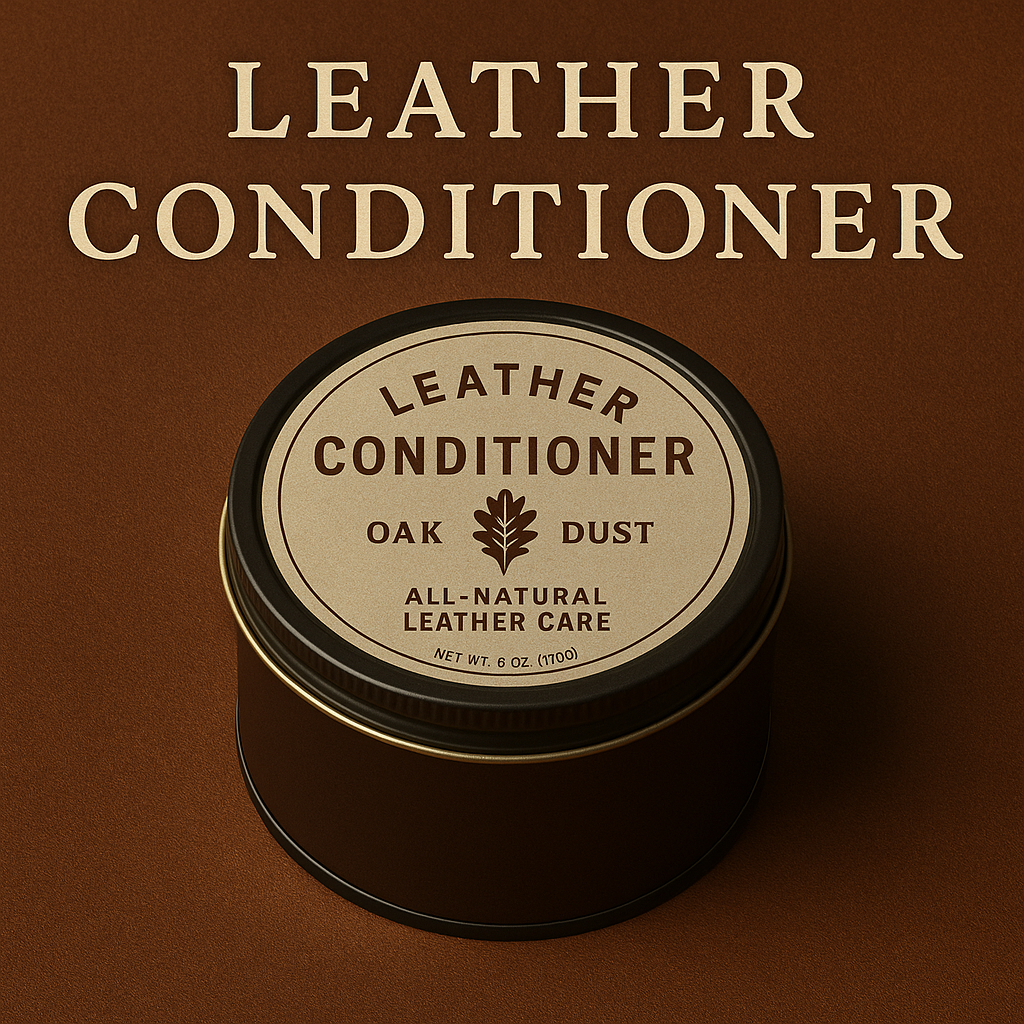Oak & Dust Boot Care Guide
Your Oak & Dust boots are crafted from premium materials designed to last a lifetime. Like any fine leather product, proper care is essential to maintain their beauty, comfort, and durability. Follow this guide to ensure your boots age gracefully and remain a cherished part of your journey.
1. Why Proper Boot Care Matters
- Longevity: Regular cleaning and conditioning extend the life of your leather, preventing cracks and deterioration.
- Maintained Fit: Hydrated leather retains its shape and flexibility, ensuring the custom fit you've developed over time remains comfortable.
- Preserved Appearance: Care routines protect the rich finish and character of the full-grain leather, allowing it to develop a beautiful patina.
- Protection: Guard against environmental damage from dirt, moisture, and sun exposure.
2. General & Daily Care Tips
- Brush After Each Wear: Use a soft horsehair brush to remove loose dirt and dust after every wear. This prevents grime from embedding into the leather.

Photo: A soft horsehair brush for daily cleaning.
- Use Boot Trees (Cedar Recommended): Insert cedar boot trees after each wear. They absorb moisture, prevent odor buildup, and help maintain the boot's shape, especially in the vamp and toe box.

Photo: Cedar boot trees help maintain shape and absorb moisture.
- Rotate Your Boots: Allow your boots to rest for at least 24 hours between wears. This gives the leather time to dry out from natural foot perspiration and helps the cork footbed reset.
- Avoid Extreme Heat: Never dry your boots near direct heat sources (radiators, fireplaces, direct sunlight). This can dry out and crack the leather. Air dry naturally in a cool, well-ventilated area.
3. Cleaning Your Boots
- Remove Laces (If Applicable): For boots with laces, remove them for thorough cleaning.
- Brush Off Loose Debris: Use a stiff brush (like a nylon sole brush) for the outsole and heel, and a softer brush (horsehair) for the leather upper.
- Wipe Down: Use a damp (not wet) cloth to gently wipe down the entire leather surface, removing surface dirt and dust. For stubborn dirt, use a small amount of mild saddle soap (specifically formulated for leather) with a damp sponge. Work up a light lather, then wipe clean with a separate, clean damp cloth.
- Let Dry Completely: Allow boots to air dry away from direct heat for several hours before proceeding to conditioning.
4. Conditioning the Leather
- Why Condition? Leather is skin and needs moisture to remain supple, prevent cracking, and maintain its strength. Conditioning replenishes natural oils lost during wear and cleaning.
- What to Use: Use a high-quality leather conditioner or cream specifically designed for full-grain leather. Avoid products with silicone or petroleum distillates.

Photo: A high-quality leather conditioner is key.
- How Often: Condition your boots every 1-3 months, depending on frequency of wear and exposure to harsh conditions (e.g., very dry climates, heavy use in wet/muddy environments). If the leather looks dry or dull, it's time to condition.
- Application: Apply a small amount of conditioner with a clean cloth or your fingers. Work it into the leather in small circular motions, ensuring even coverage. Pay extra attention to areas that flex (vamp, ankle) and areas prone to dryness.
- Buff: After allowing the conditioner to soak in for 10-15 minutes (or as per product instructions), gently buff the boots with a clean, dry horsehair brush or soft cloth to remove excess and restore a natural sheen.
5. Protecting & Waterproofing
- When to Protect: Consider using a leather protector or water-resistant spray, especially if you anticipate wearing your boots in wet conditions. Apply this after cleaning and conditioning.
- Types: Look for water and stain repellent sprays suitable for leather. Some are beeswax or oil-based.
- Application: Apply according to product instructions, typically in thin, even coats. Allow to dry completely between coats and before wear.
- Note: While protectors offer enhanced resistance, no leather boot is entirely waterproof unless explicitly designed with waterproof membranes.
6. Proper Storage
- Clean Before Storing: Always clean and condition your boots before storing them for an extended period.
- Use Boot Trees: Insert cedar boot trees to maintain shape and absorb moisture.
- Keep in a Cool, Dry Place: Store boots in a well-ventilated area away from direct sunlight, humidity, and extreme temperatures.
- Use Boot Bags/Boxes: For long-term storage, breathable boot bags or original shoe boxes are ideal to protect against dust and scratches. Avoid plastic bags that trap moisture.
7. When to Seek Professional Care
- Resoling: Our Goodyear Welt construction means "The Root" boots are fully resoleable. When the outsole wears thin or loses its traction, take them to a reputable cobbler.
- Major Repairs: For deep scuffs, tears, or structural damage, a professional cobbler can often perform repairs that extend the life of your boots.
- Deep Cleaning/Restoration: If your boots have seen heavy abuse or need a full rejuvenation, a professional leather care specialist can work wonders.
8. Recommended Products (General Types)
- Soft Horsehair Brush
- Stiff Sole Brush
- Clean Microfiber Cloths
- High-Quality Leather Conditioner/Cream (e.g., based on natural oils or beeswax)
- Mild Saddle Soap (for deep cleaning)
- Leather Protector Spray (optional)
- Cedar Boot Trees
A Note on Patina: Embrace the journey! Your Oak & Dust boots are made from full-grain leather, which will naturally develop a unique patina over time. This rich character, including minor scuffs and creases, tells the story of your adventures and is a hallmark of genuine, high-quality leather. Proper care ensures this story is a long and beautiful one.